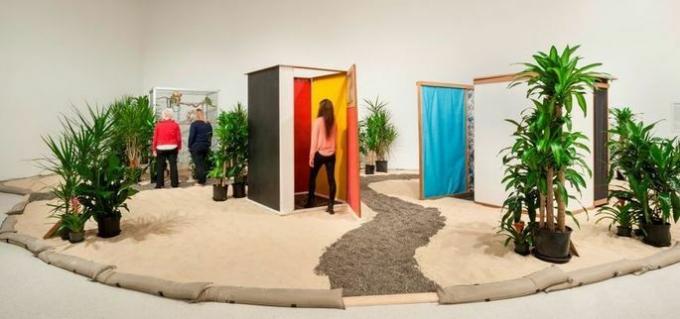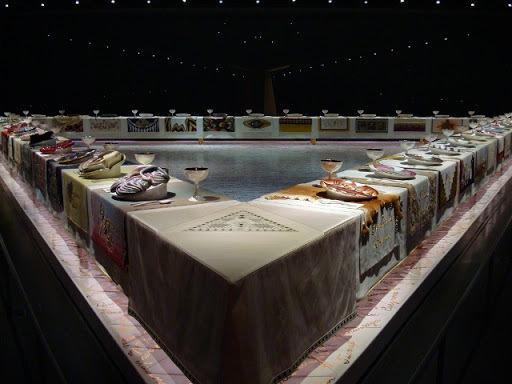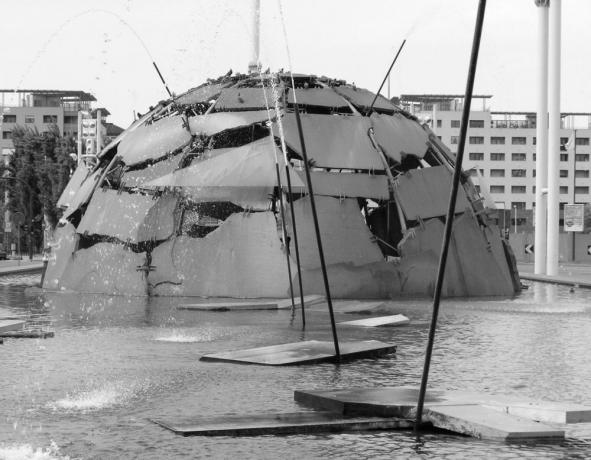In art, we call installation a type of work that uses space as a fundamental element.
It is a language related to contemporary art and, most of the time, it is assembled in art spaces such as museums and galleries. However, it can also be performed outdoors.
Installation source
The word installation emerged in the 60s, when art in general was undergoing major transformations. But previously, artists were already producing works that sought to work on top of the environments, creating new scenarios and provoking the public to interact with the works.
This is the case of artist Kurt Schwitters (1887-1948), who in the 1920s created compositions with objects that are arranged in rooms.
Another important name for installation in art is Marcel Duchamp (1887-1968). Between 1938 and 1942 the artist created works in which he appropriated the spaces. one of her is String Miles, which consists of a spool of string unwound in the environment of a museum.
Examples of installations and their artists
1. Tropicália (1967), by Hélio Oiticica
Tropicália is the name of an installation made in 1967 by the Rio de Janeiro artist Hélio Oiticica (1937-1980).
In this work, Oiticica builds a place that concentrates several references of what he believed to be the portrait of Brazilianness.
Thus, he creates a labyrinthine route full of screens, tropical plants, sand, stones, written phrases and music.
The work is considered an icon of a generation, so much so that it gave its name to the Tropicália Movement, which took place in the 70s, with expression mainly in music.

2. The Banquet (1974-1979), by Judy Chicago
The work The banquet, originally titled as The Dinner Party, is a creation of the American artist Judy Chicago (1939-)
The installation, made in the 70s, is one of the most remembered when it comes to feminist art.
That's because the artist created an environment that proposes a dinner in honor of several important women in history.
There are 39 seats arranged on a triangular table, with the triangle symbolizing equality. The dishes are made of porcelain and hand-painted with themes reminiscent of the guests, who have their names embroidered in gold on the tablecloth.

3. The house is the body: Labyrinth (1968), by Lygia Clark
In The house is the body: Labyrinth, the artist Lygia Clark (1920-1988) proposes to the public to enter an 8 meter long structure in which there is a simulation of the experience of conception.
It is through the senses and bodily interaction that the viewer is no longer just an observer of the work and it becomes part of it, experiencing the sensations of penetration, ovulation, germination and expulsion of a uterus.
Lygia's production has several installations, in addition to clothing, actions and objects.
4. Diversion to the Red (1967), by Cildo Meireles
The installation red shift it was first assembled in 1967. The work of the Brazilian Cildo Meireles can be found today at the Inhotim Museum (MG).
The work consists of three environments, in which the first is a room in which all objects are red, creating a kind of fascination and, at the same time, uncomfortable.
Here, the artist works on feelings such as passion, revolt and violence related to the military dictatorship.

Main characteristics of artistic installation
- Large format works;
- Necessarily use of space as part of the work;
- Audience interaction;
- “Non-collectible” works.
Since the name installation in art was coined, there was a difficulty in delimiting what exactly this aspect would be.
This is because the works blend with other genres of contemporary art, such as sculpture, objects and land art (art made in large territories that interact with nature).
Artists who use the installation resource are generally concerned with creating a different atmosphere and instilling the audience into an appreciation with various senses, not just the visual.
Furthermore, the fact that the works are of large proportions makes it impossible for them to be collectable, in this sense there is a questioning of the art market.
You may also be interested:
- performance in art
- Contemporary art
- What is art?
Learn more about contemporary art:



